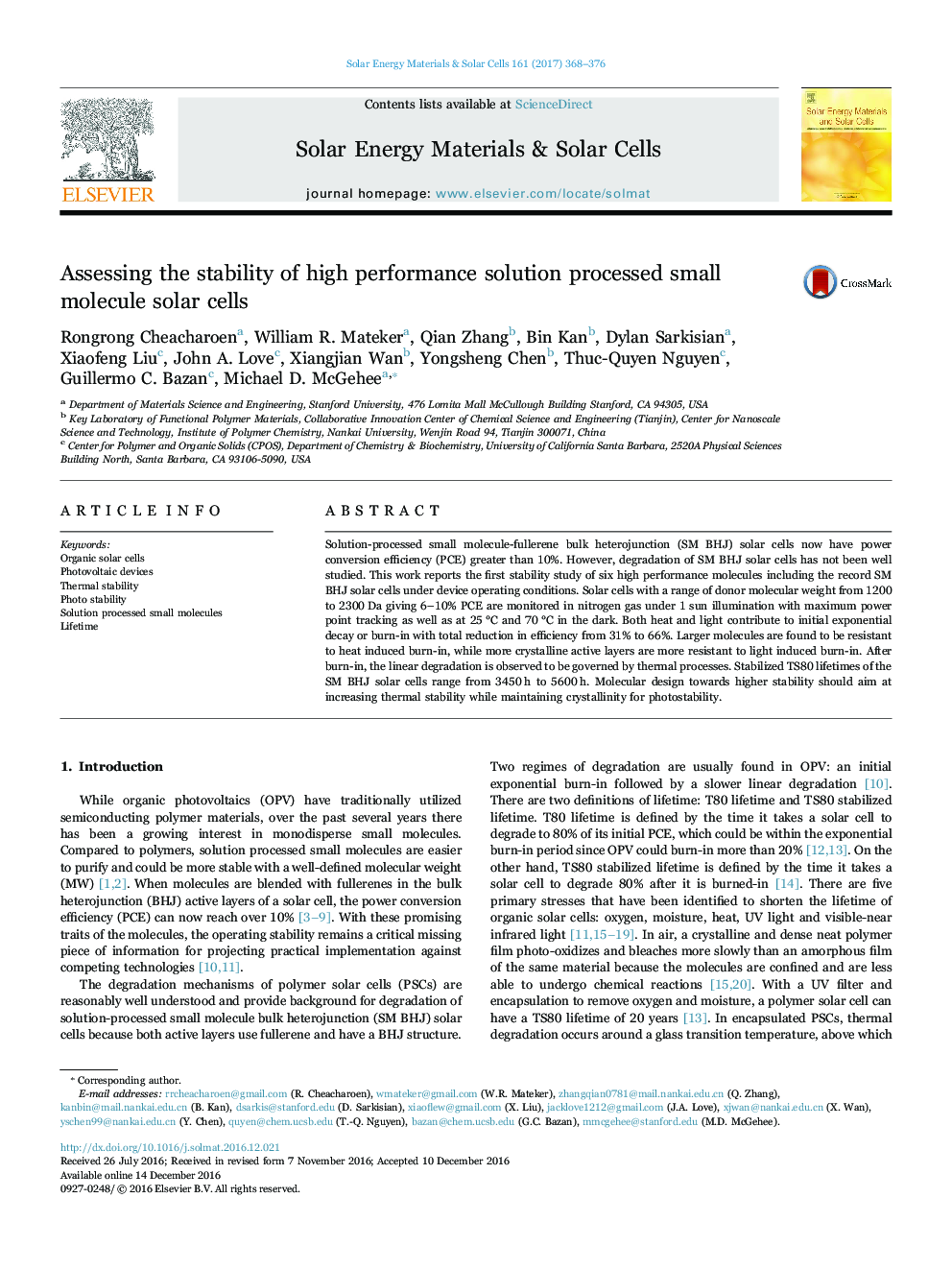| Article ID | Journal | Published Year | Pages | File Type |
|---|---|---|---|---|
| 6457054 | Solar Energy Materials and Solar Cells | 2017 | 9 Pages |
â¢Both heat and light contribute to 31-66% initial burn-in degradation.â¢First reported TS80 lifetime (3450-5600 h) of high PCE SM BHJ solar cells.â¢Post burn-in lifetime of SM BHJ is governed by thermal degradation.â¢Higher crystallinity active layer solar cells have less photo burn-in.â¢Larger molecule weight donor contributes to higher thermal stability.
Solution-processed small molecule-fullerene bulk heterojunction (SM BHJ) solar cells now have power conversion efficiency (PCE) greater than 10%. However, degradation of SM BHJ solar cells has not been well studied. This work reports the first stability study of six high performance molecules including the record SM BHJ solar cells under device operating conditions. Solar cells with a range of donor molecular weight from 1200 to 2300 Da giving 6-10% PCE are monitored in nitrogen gas under 1 sun illumination with maximum power point tracking as well as at 25 °C and 70 °C in the dark. Both heat and light contribute to initial exponential decay or burn-in with total reduction in efficiency from 31% to 66%. Larger molecules are found to be resistant to heat induced burn-in, while more crystalline active layers are more resistant to light induced burn-in. After burn-in, the linear degradation is observed to be governed by thermal processes. Stabilized TS80 lifetimes of the SM BHJ solar cells range from 3450 h to 5600 h. Molecular design towards higher stability should aim at increasing thermal stability while maintaining crystallinity for photostability.
Graphical abstractDownload high-res image (266KB)Download full-size image
